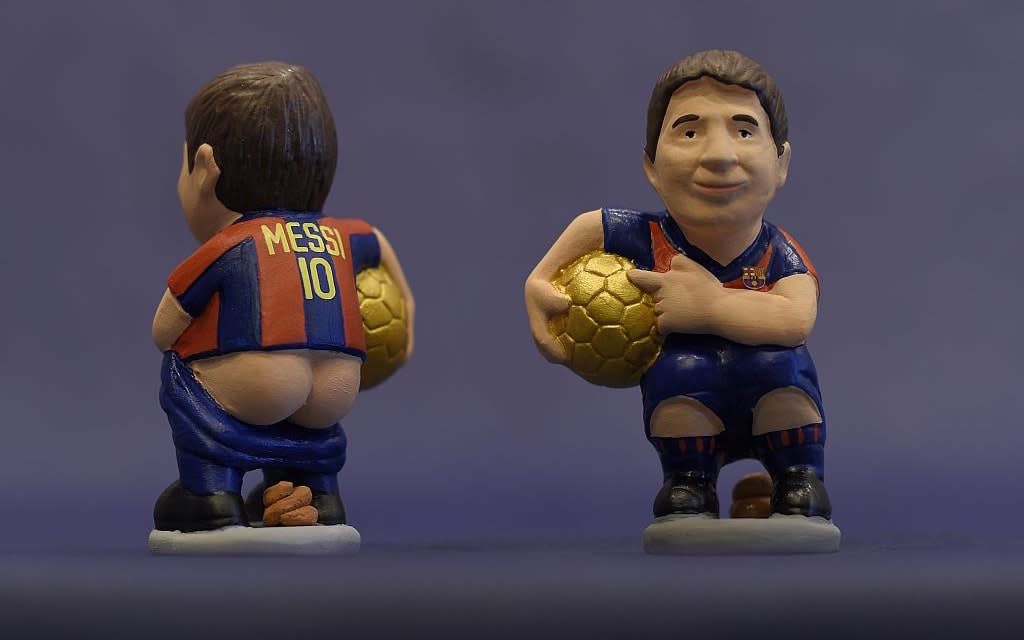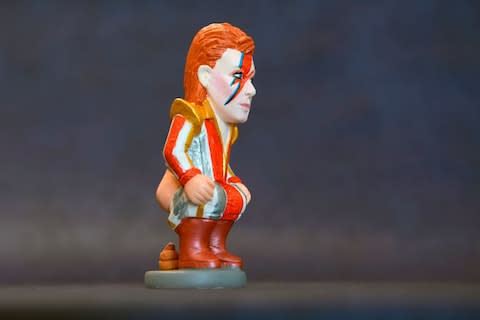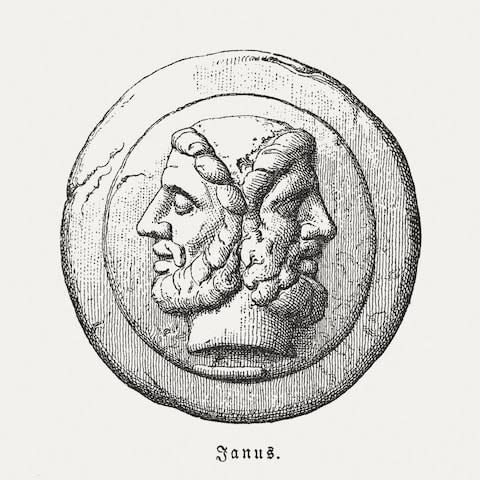The European region with a bizarre scatological obsession

Nothing says Christmas like Lionel Messi taking a dump. Not to the wide-eyed children queuing up at the stalls of Barcelona’s Santa Llúcia Christmas fair, anyway. Their faces filled with wonder, they scan the shelves of figurines for their favourite cartoon character, sportsperson or singer, each lovingly rendered in clay, trousers round their ankles as they enjoy a satisfying bowel movement.
This is the caganer – the ‘Christmas crapper’ without whom no Catalan nativity scene is complete. Traditionally this was a man dressed in white, perhaps a shepherd, wearing the typical Catalan barretina (a floppy red hat not unlike Santa’s. Or the Smurfs’). Nowadays, however, these are vastly outnumbered by celebrities and politicians. Donald Trump and Boris Johnson squat happily alongside the likes of Eden Hazard.
No well-known personality is immune, and both the King of Spain and the Pope are represented. Bestsellers reflect the year gone by. In 2018, independence leader and former Catalan president Carles Puigdemont was flying off the shelves, as was the late opera singer Montserrat Caballé. This year Justin Trudeau is proving popular, as is Greta Thunberg. For something a little more cultured, options include Salvador Dali and Frida Kahlo.





There are many theories about the origins of this faecal fun, which many believe symbolises both fertility and the contrast of the human and the divine – as the newborn son of God lies in his manger, one of his well-wishers needs urgently to answer the call of nature.
The figures dates back centuries, and appear in paintings from the 17th and 18th centuries, though they only began to take an essential role in the nativity scene at the beginning of the 20th century. Although the caganer exists elsewhere in the Mediterranean, no one has embraced it quite as enthusiastically as the Catalans, famed for their scatological humour, which works its way into many a popular refrain.
Look no further than the caga tió, the ‘s**tting log’, also found in every child’s home at Christmas. Wrapped carefully in a blanket, only its smiling face peeking out from one end, the tió is placed on straw and carefully nurtured with fruit peelings, biscuits and other offerings in the run up to Christmas, before it meets a grisly end.

On Christmas morning, children charge downstairs to see if the tió has deposited its load of sweets and little gifts. In a time-honoured family ritual, the little darlings do this by thrashing their grinning benefactor with sticks, while singing the following cheery song:
Caga tió
Caga torró,
Avellanes i mató
Si no cagues bé
Et daré un cop de bastó
Caga tió
Which roughly translates as:
S**t, Log
S**t nougat,
Hazelnuts and cheese
If you don’t s**t well
I’ll hit you with a stick
S**t, Log
Before the blanket is whipped away to reveal the goodies underneath.

The festive traditions are not all fecal. Christmas week also sees the Dia dels Inocents, something akin to April Fool’s Day but with a darker backstory. It commemorates the Massacre of the Innocents, when Herod ordered the murder of male babies in Bethlehem in the hope of slaughtering Jesus and avoiding his ascension to Herod’s throne.
‘Inocent’, in Catalan, also carries the meaning of naïve, or gullible, and this is a day for kids to play tricks on one another. The most traditional is the ‘llufa’, a person cut out of paper and fastened to unsuspecting backs. This is another custom thought to date back centuries, when the llufa was more likely to be made from cabbage leaves or even rabbit skin.
And finally, the week rounds off with the New Year tradition of ‘L’Home dels Nassos’ (‘The Man with the Noses’). The challenge that children face on 31st December is finding a man who ‘has as many noses as the year has days’ – the trick being, of course, that there is only one day of the year left, and so L’Home can never be found in the crowd.

The Roman god Janus is thought to be the inspiration behind this one, his two noses facing past and future symbolising the end of one year and beginning of the new, along with his reputation of playing fast and loose with the truth and fooling those who think they understand the game.
That L’Home dels Nassos cannot be found on account of being Everyman doesn’t stop his appearing in local festivities and the city’s regular parades, as a fibre-glass cap-gros (‘fat-head’) with a huge nose. And should you arrive in Barcelona out of season, you’ll find him for sale in souvenir shops in miniature form.
Crouched, inevitably, over a steaming pile of dung.



